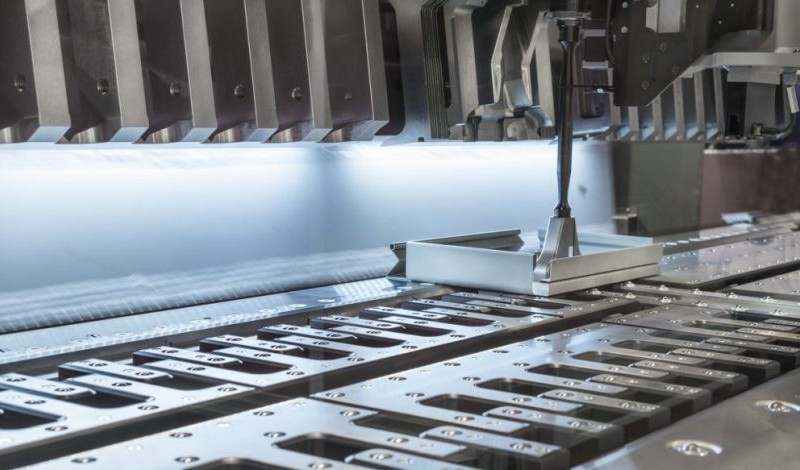Metal Stamping: Everything You Need to Understand About the Process
Metal Stamping: Everything You Need to Understand About the Process
Blog Article
Metal Marking Advancements: Elevating Manufacturing Processes for Superior Outcomes
In the world of making procedures, metal stamping has actually long been a keystone strategy for creating a selection of accuracy parts. With the relentless march of technological advancement, the landscape of metal stamping is undergoing a significant transformation.
Evolution of Steel Marking Methods

In addition, innovations in material science have actually resulted in the advancement of high-strength alloys that can now be seamlessly stamped into detailed forms, satisfying a wider series of commercial applications. The assimilation of robotics and expert system has actually further maximized the marking procedure by enhancing rate and accuracy while minimizing the danger of human mistake.

Impact of Advanced Materials
Have advanced materials transformed metal stamping procedures considerably in the manufacturing industry? By making use of materials such as high-strength alloys, advanced compounds, and cutting-edge layers, metal marking procedures can currently generate parts that are lighter, more powerful, and more long lasting than ever previously.
These innovative products provide superior mechanical buildings, corrosion resistance, and thermal stability, permitting producers to meet the needs of modern industries such as aerospace, automobile, and electronics. Furthermore, using innovative materials in metal stamping has actually helped with the manufacturing of complex geometries and elaborate layouts that were previously unattainable through conventional approaches.
Furthermore, the execution of sophisticated products has actually led to minimized product waste, reduced manufacturing expenses, and much shorter preparations, making steel marking processes much more affordable and sustainable. As technology continues to advance, the impact of sophisticated products on steel stamping procedures is expected to drive further development and boost the competitiveness of manufacturers in the global market.
Automation in Metal Stamping
The development of steel marking processes driven by the combination of advanced products has set the phase for substantial improvements in automation within the production industry. Automation in metal stamping has actually transformed manufacturing procedures, boosting effectiveness, precision, and overall result top quality. Through the utilization of robotics, sensors, and computer-controlled systems, tasks that were as soon as hand-operated and time-consuming can now be executed with unparalleled rate and precision.
Automation in metal marking not just increases production rates however additionally ensures uniformity in the production procedure. By lessening human intervention, the risk of errors is dramatically decreased, leading to greater degrees of product uniformity and dependability. Additionally, automation enables suppliers to embark on complex stamping jobs that would be tough or impractical to attain manually.
Additionally, automation in metal stamping adds to a much safer working atmosphere by minimizing the need for employees to take part in repeated or hazardous tasks - Metal Stamping. This shift in the direction of automation not only enhances efficiency however likewise leads the means for the future of manufacturing, where innovation plays a main role in driving operational excellence
Quality Assurance and Inspection Equipments
With a focus on accuracy and dependability, quality assurance and evaluation systems play an essential duty in guaranteeing product excellence in metal marking procedures. These systems are designed to check every phase of manufacturing, from material inspection to the end product, to assure that all components meet the required standards. By implementing advanced innovations such as optical evaluation systems, coordinate measuring makers (CMM), official website and automated gauging equipment, manufacturers can discover also the tiniest variances in measurements, surface area quality, and general honesty of stamped components.

Sustainability Practices in Steel Stamping
Building upon the structure of accuracy and integrity developed through high quality control and inspection systems, the combination of sustainable methods in metal stamping processes is significantly becoming a focal point for manufacturers looking for to lessen ecological influence and enhance resource utilization. Sustainability techniques in steel stamping encompass a series of efforts aimed at lowering waste generation, power usage, and greenhouse gas emissions throughout the production procedure.
One key aspect of sustainability in steel stamping is the adoption of environment-friendly materials and technologies that advertise recyclability and waste decrease. By utilizing recycled products and applying energy-efficient machinery, suppliers can reduce their carbon footprint and contribute to a much more sustainable manufacturing cycle. Additionally, optimizing manufacturing procedures to lessen material waste and power usage not just benefits the environment yet additionally results in cost financial savings for companies in home the future.
In addition, the execution of sustainable practices in steel stamping can boost brand name track record and attract ecologically conscious consumers. As sustainability remains to obtain significance in the production market, incorporating green efforts right into metal stamping procedures is crucial for long-lasting success and competition out there.
Conclusion
In verdict, steel marking techniques have significantly evolved over time, integrating advanced products and automation to improve making procedures. Quality assurance and assessment systems play a vital role in making certain superior results, while like this sustainability methods are progressively being applied to decrease ecological effect. These developments in steel stamping have actually revolutionized the market, leading to a lot more sustainable and efficient production approaches for various sectors.
Steel marking, as soon as a manual and labor-intensive process, has changed right into a highly automated and advanced method of shaping steel sheets right into numerous forms and styles.Have advanced materials transformed metal marking procedures significantly in the manufacturing industry? By using materials such as high-strength alloys, advanced composites, and cutting-edge finishings, metal stamping processes can now produce components that are lighter, more powerful, and a lot more long lasting than ever previously.
The evolution of steel marking processes driven by the integration of innovative products has established the stage for significant developments in automation within the manufacturing sector.In final thought, metal marking methods have actually significantly advanced over time, integrating sophisticated materials and automation to boost producing processes.
Report this page